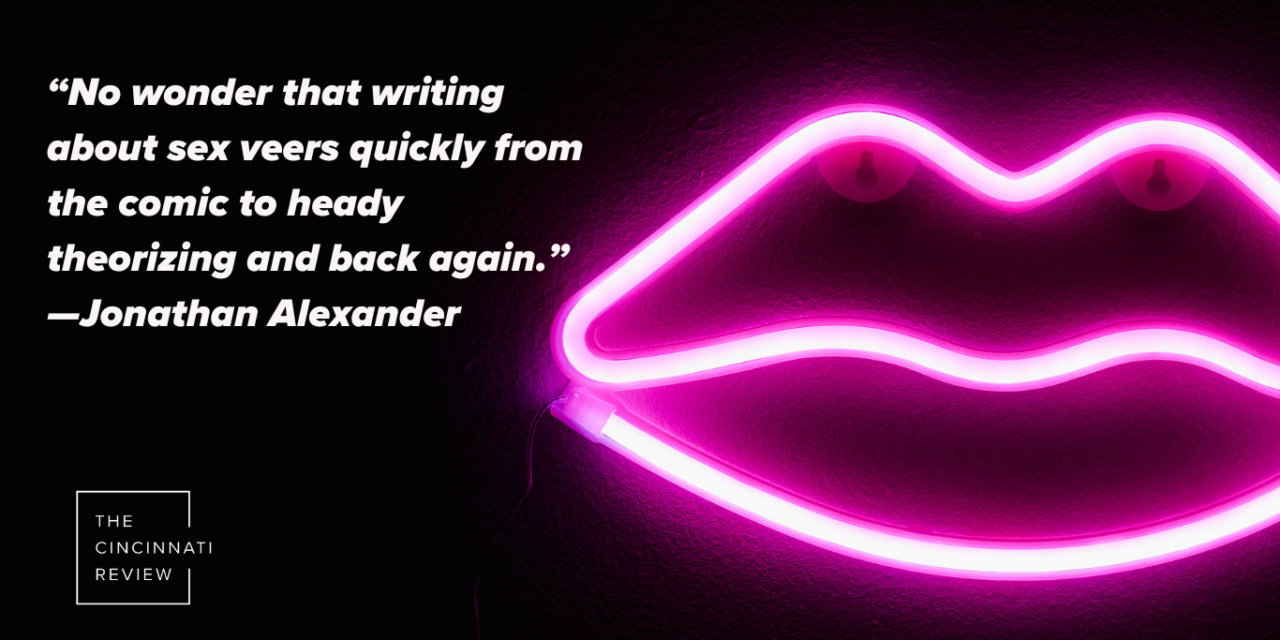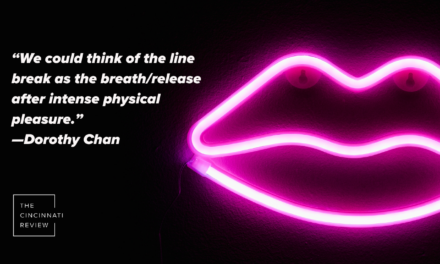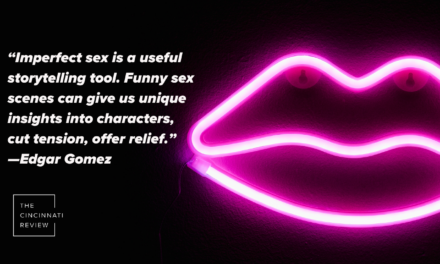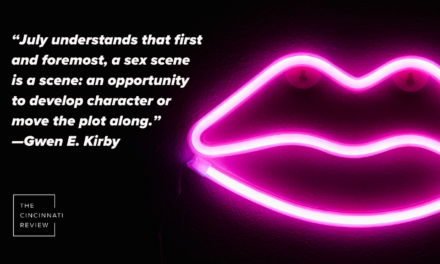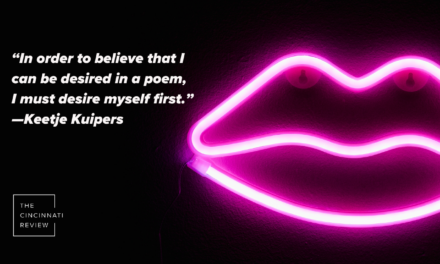To accompany our fall 2024 issue (21.2), we have curated a folio on writing about sex (reviews and craft essays) after noticing that several pieces in the print issue include sex, especially the play excerpt by Gloria Oladipo, John Fulton’s story “Emily Leaves Switzerland,” Karolina Letunova’s story “Turn Your Back to the Forest,” and poems by Keetje Kuipers and Jessica Nirvana Ram. We reached out to five writers to get their contribution to the conversation.
Here is Jonathan Alexander’s craft review of two nonfiction books:
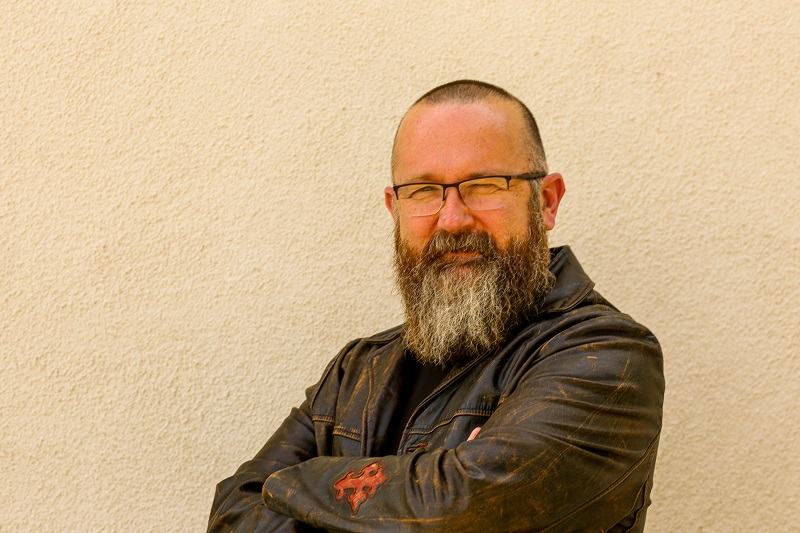
Writing Sex
Why Are People Into That? A Cultural Investigation of Kink. Tina Horn. Hachette Books, 2024. 320 pp. $30.00 (cloth)
Boyslut: A Memoir and Manifesto. Zachary Zane. Abrams Books, 2023. 240 pp. $26.00 (cloth)
I have spent much of this past summer working on a creative nonfiction book about sexual agency, reflecting on my own coming into awareness as a person with specific sexual interests and desires, and learning how to articulate those desires in relation to others. As I write that sentence, I realize how clinical I sound, how very carefully I am choosing words not just to convey as precisely as I can what I am trying to do in my writing, but also to . . . to what? Avoid offense? Be delicate, or mindful of varying sensibilities about sex? Appear smart and objective in writing about sex? Skirt some of the messiness of sex in this short piece, saving that mess for my book? All of the above?
Writing about sex evokes such questions, and many more I don’t have time or space to consider here. Suffice to say that sex is a challenging subject to write about, one that author Mary Gaitskill described once in a lecture as variously both “the nasty bits” and a “last dab of color.” In trying to write about my own sexual agency (which has turned out to be far more complicated than I’d imagined), I have turned to some classic and contemporary texts this summer, ranging from D. H. Lawrence’s Lady Chatterley’s Lover (which still seems so fresh and immediate), to Erica Jong’s Fear of Flying (which is still incredibly funny, even if the psychoanalytic stuff seems a bit dated), to Miranda July’s recently released All Fours (which balances the deeply felt seriousness of sexual exploration in midlife with a deadpan comic use of language that delightfully deflates the seriousness at times). These are good models. But these are also, largely, works of fiction. I am writing creative nonfiction, and fortunately two recent books offered some stylistic possibilities for me to consider.
First, Boyslut: A Memoir and Manifesto by Zachary Zane details the author’s commitment to living shamelessly as a sexual being, one whose desires are plural, multifarious, exploratory, and at times intense. Zane, who is making a name for himself among sex writers as a candid and unflinching purveyor of sexual diversity, has committed to what he calls “unfucking himself,” or undoing years of shame he has been taught by our culture to feel about his desires and his desiring body. How does he unfuck himself? “Through fucking everyone,” as he puts it, and that early declaration gives you a sense of his often light and witty approach to the heady topic of sexual shame. (I can’t help but note that my computer wanted to turn “unfucking” into “untucking”—a weird trans-inflected slip of the digital tongue.)
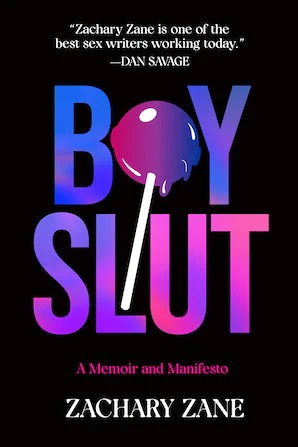
Zane covers a lot of ground in his memoir, which usefully includes a glossary of contemporary sexual terms (fraysexual was one I hadn’t yet encountered). A lot of discussion focuses on bisexuality, given that Zane’s sexual journey has centered quite a bit on his navigation of different desires—for sex, intimacy, and affection—from men, women, and the nonbinary. He writes about part of this journey this way:
By the age of twenty-three, I had read too much queer theory for my own good. I had made a distinction between my sexual and romantic attractions, convincing myself I was bi-sexual [. . .] but hetero-romantic, meaning that I was sexually attracted to men, women, and nonbinary folks but could only date and love women. Yes, I had fucked the ass that launched a thousand ships, but my boat for the sea of male romance was still docked in the harbor.
What I like about this passage is the shift from an overintellectualized approach to sex (e.g., queer theory) to what he’s doing and where he’s putting his pieces and parts (“fucked that ass”). Note the turn from the analytical language of making a “distinction between my sexual and romantic attractions” to the (not entirely successful) extended metaphor of ships, sea, and harbor—a classical allusion to the Trojan War (with perhaps a buried pun on Trojan in there?). Reading such a passage—and comparable ones are everywhere in Boyslut—reminded me of my own tortured approach to writing about sex, veering from the analytical and clinical to the comic, even hackneyed and cliché, as I have tried to find a language for discussing and describing sexual desires. This particular toggle feels like a trap, a clearly insufficient way to talk about something that seems so important and that yet at the same time often feels awkward—and not just because we are still living in a puritanical culture but because sex is, well, messy and often awkward in and of itself. And sexual desires are often messy too, refusing to cohere around easily fulfillable scenes, situations, encounters, or engagements.
Zane escapes the toggle at times, especially when he’s talking most candidly about some of his deepest—and most, uh, unconventional—desires. Take, for example, the following passage in which Zane explores his fetish for vomit:
My puke fetish has led to very rewarding and very embarrassing experiences. I was once on a date with a media personality who’s [sic] self-proclaimed life mission was to destigmatize sexual shame among gay men. We got drinks and started making out in the bar. I suggested taking it back to my place, where I learned his dick was comically large. It was like his dick ate two of my dicks, and I just knew I had to puke on it. I asked if he would be into it; he said he was, so I put a towel underneath him and went to town.
While still maintaining a comic undertone, the language has simplified, inviting us to think of this fetish as nothing to get too excited about—unless you’re really into puke. I even want to understand generously the reliance on cliché here—“went to town”—as a normalizing gesture, one that puts the extreme into close proximity with the ordinary as a way to make the fetish feel a bit more mundane.
Similar stylistic strategies abound in Tina Horn’s comparable work of nonfiction, Why Are People Into That? A Cultural Investigation of Kink. An outgrowth of Horn’s popular podcast (of roughly the same name), the book explores in similar mildly memoiristic fashion the author’s sex work and her mission as a sex and BDSM educator. Balancing candor and the comic as Zane does, Horn pushes a bit harder on what I want to call the self-analytic, that dimension of the memoir that also serves as a kind of manifesto for not just recounting a set of experiences but placing them in a larger context of meaningfulness, whether cultural, social, or even political. For instance, near the beginning of her book, Horn describes a takeaway from a previous relationship:
In retrospect, I don’t think my ex and I had actually grown apart because of mismatched libidos: it had more to do with the fact that, unlike him, I was into sex the way we were both into pop culture. I was a fan. I didn’t just want to experience sex; I wanted to analyze it, converse about it, create about it.
Stylistically, I love the use of the semicolon (which appears with some frequency in this book) as it marks a particular turn—in Horn’s case, a turn to the analytical. She brings the same dual experiential and analytical energy to subsequent chapters that variously explore foot fetishes, orgies, bimbofication, sploshing (fluid-forward messy sex), cannibalism (consuming bodily fluids), fisting, FinDom, and the controversial pursuit of consensual nonconsent.
While Zane’s manifesto often works through assertions (e.g., I like puke: deal), Horn’s book slows down at times, making room for more explanation, while always eschewing a defensive tone. About consensual nonconsent, for example, she is willing to make some initial assertions: “There is no excitement without risk. Remove the danger, and lust is an engine running on fumes.” But then she slows down to unpack some of the conceptual—and sexual—thorniness here:
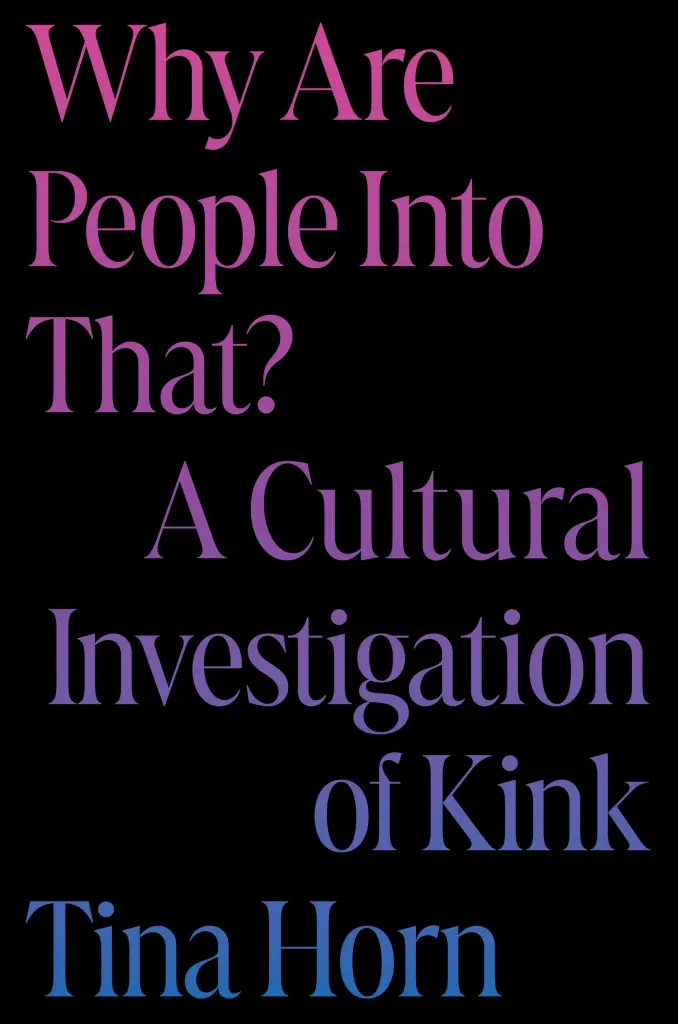
A rape fantasy is the opposite of rejection. Rejection is embarrassing, yes, but it’s also a disappointment, a denial of getting what you want. I’ve gotten so frustrated with timid partners that the cruelty of assault seems preferable to not getting to have any experience at all. It would be lovely to be gently guided into losing control, but sometimes our grip on control is so tight that we need to be forced to let go. We need to run and jump off a rock before our executive functioning prevents us from free falling with the blue sky above us, into the cool abandon of the river.
Nearly every sentence doubles back on itself: “but it’s also” and “but sometimes” signal that we are in thick and dense intellectual and emotional territory, with qualifications and caveats abounding. And that’s appropriate: Horn is treading carefully here, knowing that issues of consent are thorny. Her writing in such passages shows how she’s trying to make a case for the appearance or even simulation of non-consent at a time that otherwise demands enthusiastic consent. Curiously, there are no semicolons in this passage, but the work they do is everywhere, even in the very first sentence. There, in a deceptively simple sentence, Horn plays with a powerful shift, coupling rape and rejection to argue that the pursuit of such a fantasy is not just about experiencing feelings of powerlessness but also a complex form of validation. The turn reminds me of how I once wrote about an intimate friend, “I want you to make demands of me,” as though the imposition were precisely the thing that signals, that creates, intimacy.
Horn’s exploration of spanking exemplifies this approach:
This man, who was twice my age, would settle me across his lap and begin with teasing percussive taps pattering along my ass and thighs. His spankings had dynamics. He would distribute intensity equally, as my skin changed colors from white to pink to red to purple. By the time my backside started to sting, I was so caught up that I felt more catharsis than suffering.
Again, note the shift here: suffering becomes catharsis, a conceptual leap that the preceding sentences prepare us for, first with the claim that “His spankings had dynamics” and then the steady transformation of equal intensity into a measured intensification of color: from white to pink to red to purple. Everything in Horn’s writing about sex is about going further—not just pushing one’s limits (though that too) but probing more deeply the feelings, experiences, and meanings emerging from a good kink experience.
But even more, Horn offers us one further twist, broadening the scope of how we understand kink to the social, even the political:
Is my craving for punishment and pain the direct result of life lived under a patriarchal, capitalist society, one where my physical and emotional well-being is constantly under threat, and my eroticization of that fear is a twisted mutation of a need for control and comfort in an unkind world? Probably! [ . . . ] BDSM offers us a practical way to navigate power and pleasure in our reality as it exists right now, even if that involves asking for pain.
Horn seems to delight in such explorations of the “twist” or the “twisted,” the ways in which the experience of kink often relies on shifts, turns, changes, even reversals—which all makes a kind of sense given the ways in which sex in general, not just kink, often makes a mess of things and deposits you on the other side of it a bit changed, a bit different, even if only for a little while.
I’m unsure where my own writing on sex and sexual agency will take me, but Zachary Zane and Tina Horn offer compelling accounts of sexual agency in all its fluid and contrarian messiness and complexity—a messiness frequently reflected and refracted at the level of their sentences. No wonder that writing about sex veers quickly from the comic to heady theorizing and back again. Not surprising that writing about fucking is itself a mindfuck.
Jonathan Alexander—a writer, scholar, and artist—is the author of the “Creep” trilogy, including Creep: A Life, a Theory, and Apology (Punctum Books, 2017); Bullied: The Story of an Abuse (Punctum Books, 2021); and Dear Queer Self: An Experiment in Memoir (Acre Books, 2022), amongst other books. He is Chancellor’s Professor of English at the University of California, Irvine.

